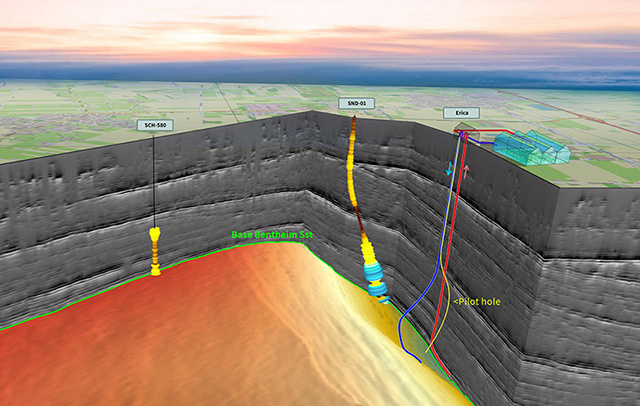Geothermie Groep Nederland (GGN), dGB Earth Sciences and two suppliers of high-performance drilling services have joined their expertise to harvest low-enthalpy geothermal energy with temperatures ranging from 60 – 90 0C using LUC installations. LUC’s enable economic development of geothermal energy for domestic heating and heating of greenhouses, also from lower-quality aquifers in smaller-scale projects. The method consists of an innovative combination of project management, best-practices in well engineering, production technology and advanced reservoir management.

After a pre-study by dGB, each LUC project starts by drilling a pilot hole. That well is logged while drilling and inflow-tested. The static and dynamic test data provides valuable insight about the drainage area and production behavior of the aquifer. If the data show that the required geothermal power cannot be produced for the desired lifecycle, the project can be stopped at relatively low cost. Therefore the financial exposure of a LUC project is limited. If the project is continued (the test data confirms the pre-study uncertainty range), the producer and injector wells are drilled. The final well-designs (aquifer length and distance between the wells) are based on the in-situ test-results from the pilot hole. Please note, that the financial risk of a typical geothermal project equals the total development costs of the entire project. In The Netherlands the typical (base-case) costs of a high-power geothermal project is approximately € 30,000,000.
Apart from this very different financial risk profile LUCs have a number of distinct other benefits over “typical” larger-scale conventional developments:
- Development costs are significantly lower (€ 3,500,000 – 6,500,000);
- Drainage areas are smaller which means that installations can be placed closer together and the local heat-potential can be harvested optimally on a regional scale;
- The risk of induced seismicity is negligible because LUCs operate with low flow rates and low pressures.
- LUC production rates and modest temperatures (low power installations) allow for the development of reservoirs that would otherwise not be considered clean, renewable and economic heat sources
- For clients with moderate or high power demands (10-15 MWth), LUC developments can be combined in a local network that will greatly enhance assurance of heat delivery;
- The environmental and operational footprint is much smaller so that integration in domestic neighborhoods is possible.
We are currently building a portfolio of LUC developments in the Eastern part of The Netherlands (Drenthe Province and Twente Region). The image above is an artist impression of an LUC for heating greenhouses in Drenthe. Production is from the Bentheim Sst at approx. 1700 mTVD.